Komal Kansara Rogan Art Introduction
Komal Kansara: Reviving the 1550-Year-Old Rogan Art. Komal Kansara, hailing from the quaint village of Madhapar in Kutch, Gujarat, is a remarkable figure in the world of traditional art. Born and raised in Madhapar Bhuj, she completed her education up to the 10th grade before embarking on a life-changing journey. In 2010, Komal married Ashish Kansara, a master artisan renowned for his expertise in Rogan painting—a 1550-year-old art form. This union not only marked a significant personal milestone for Komal but also set the stage for her own foray into the intricate world of Rogan art. Today, Komal stands out as the first female Rogan painting artist, passionately carrying forward this ancient craft and making her mark in a traditionally male-dominated field.
Reviving the 1550-Year-Old Rogan Art
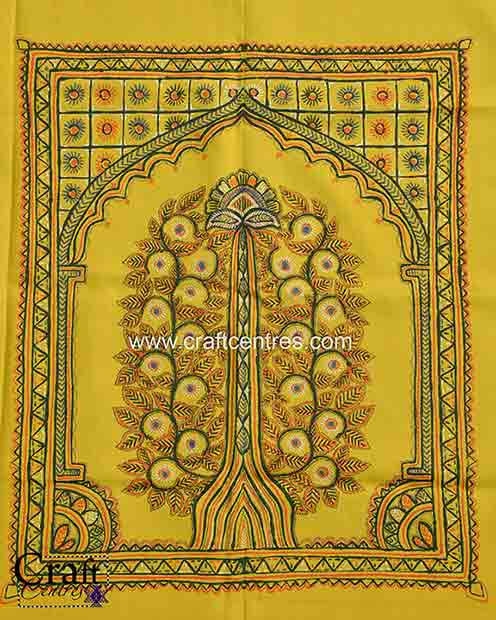
Rogan painting, a vibrant and intricate art form, has long been shrouded in myths and misconceptions. For years, its origins and techniques were speculative until 2008, when groundbreaking discoveries brought clarity. Japanese scientist Yoko Taniguchi and UNESCO unveiled an astonishing revelation during their research in Bamiyan, Afghanistan—a city steeped in Buddhist history. They discovered a treasure trove of ancient oil paintings on walls, wooden doors, and textiles, suggesting that Rogan’s roots might trace back to the 6th century. These paintings, considered some of the oldest examples of oil art, utilized a blend of drying oils like linseed, walnut, castor, and poppy seed, along with chalk and natural pigments. This revelation not only solidified the historical significance of Rogan art but also connected its ancient techniques to contemporary practices in Kutch, Gujarat, where it continues to flourish.
Journey of Rogan Painting
During the Silk Route era, Indian artisans’ handicrafts, including the exquisite Rogan art, were exported to Europe, China, and Japan. In Gujarat, this art form was practiced by Hindus, adorning Chania and Saris used in Hindu weddings and still seen in many villages today. However, with the rise of machine printing, Rogan art faced near extinction. About 60 to 70 years ago, it was a widespread practice across Gujarat, cherished by communities such as the Bharwad, Rabari, Ahir, and Patel. Even Rajasthan once boasted many Rogan artisans. This ancient art, which dates back to the era of Buddha’s followers, is now preserved by a few dedicated families. Today, Komal Kansara plays a crucial role in reviving and preserving this heritage, teaching Rogan art in workshops and collages, ensuring its continued relevance and appreciation.
Komal Kansara’s mastery in Rogan Art
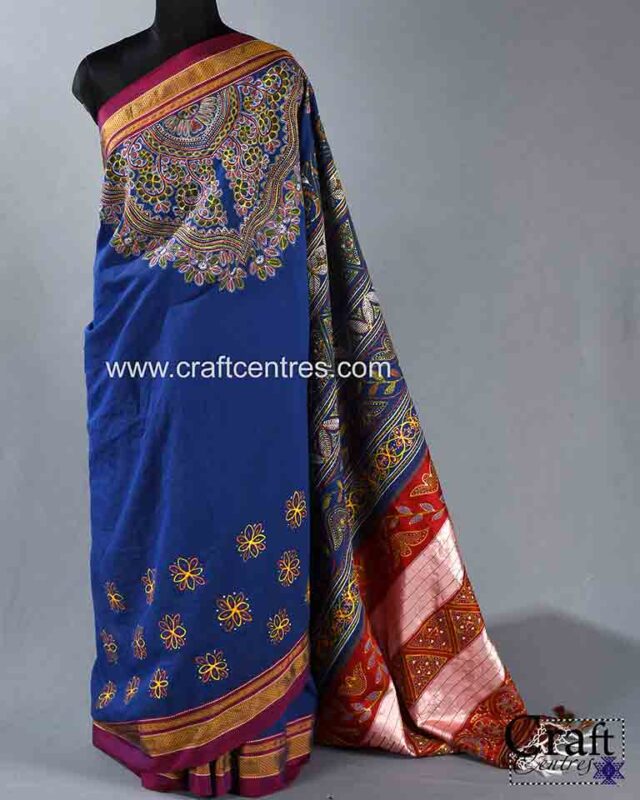
Komal Kansara’s mastery in Rogan painting is epitomized by her stunning “Tree of Life” wall piece, also known as ‘Kalpavriksha,’ which symbolizes prosperity and eternal growth. While she remains deeply rooted in traditional Rogan art techniques, Komal has also introduced innovative designs, blending classical elements with modern creativity. Her work includes not only traditional Rogan paintings but also unique prints, expanding the art form’s reach. Her fame soared when she gifted a Rogan painting to Prime Minister Narendra Modi, which garnered widespread acclaim. Currently, Komal is dedicated to reviving and preserving this ancient craft. She runs a trust focused on teaching Rogan art, where she mentors a small group of women, empowering them to carry forward this rich artistic heritage.
Rogan art Painting paste making
In Rogan painting, the creation of the distinctive paste involves a meticulous process where linseed or castor oil is boiled for 7 to 8 hours before pigment colors and chowk powder are added. This lengthy boiling process transforms the oil into a thick, vibrant paste. The painted cloth is typically dark-colored, providing a striking contrast that enhances the intensity of the colors. Patterns in Rogan art are applied using metal blocks with intricate carvings, but much of the design work is done freehand. Artists use a wooden stylus to trail thread-like strands of paint, often painting half of the design and then folding the cloth to transfer a symmetrical mirror image to the other side. The artwork is then adorned with small dots and lines to complete the intricate and decorative patterns.
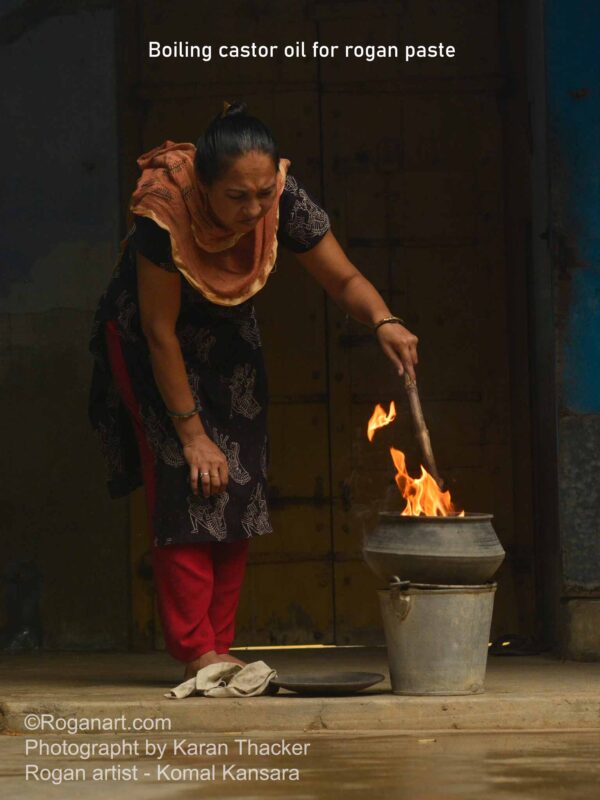
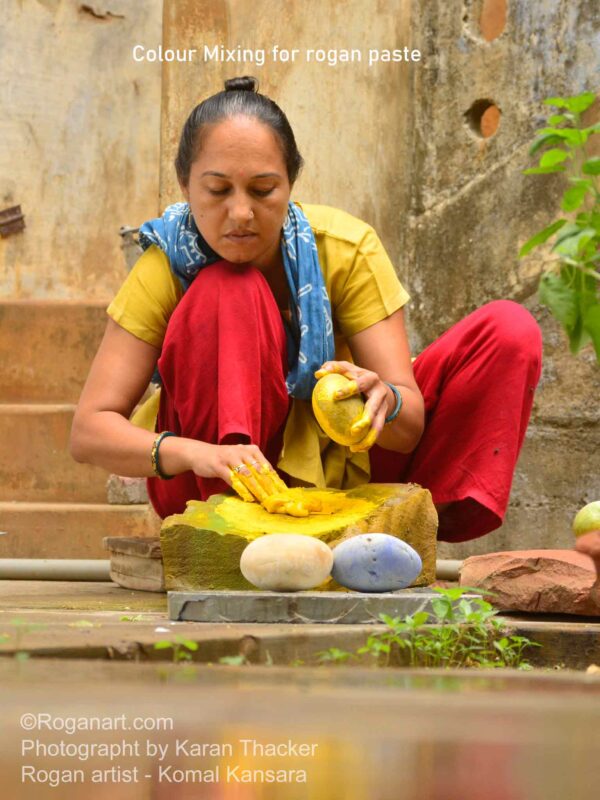
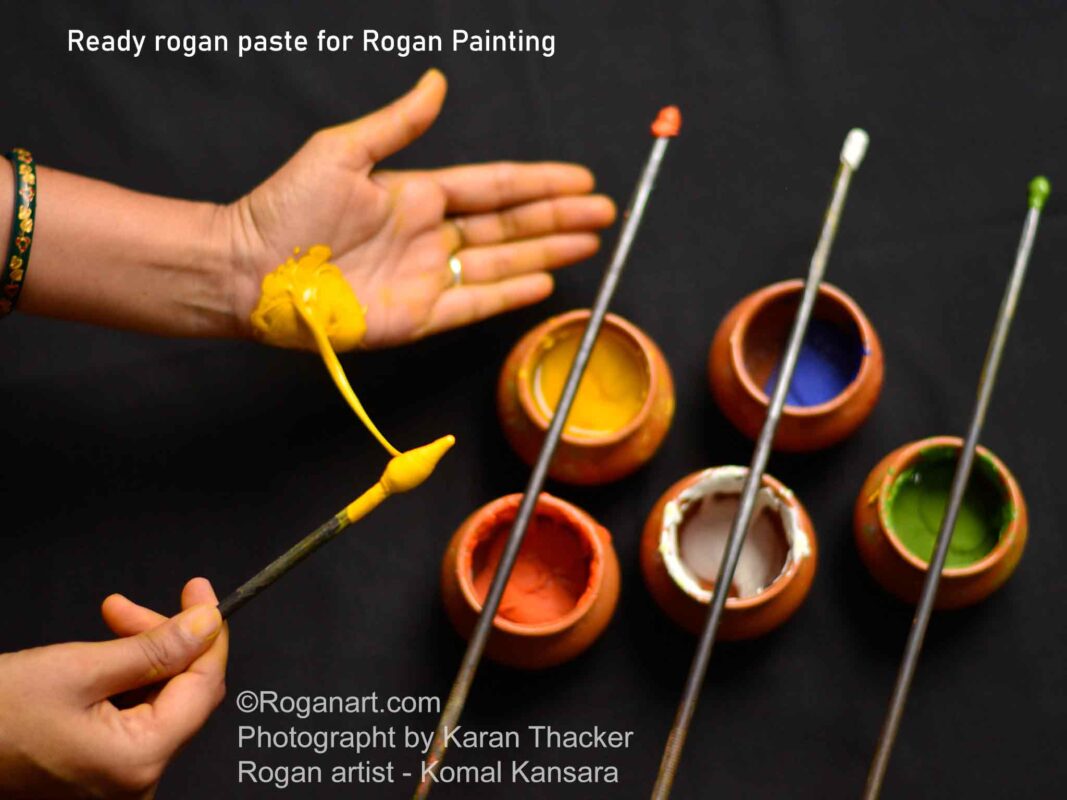
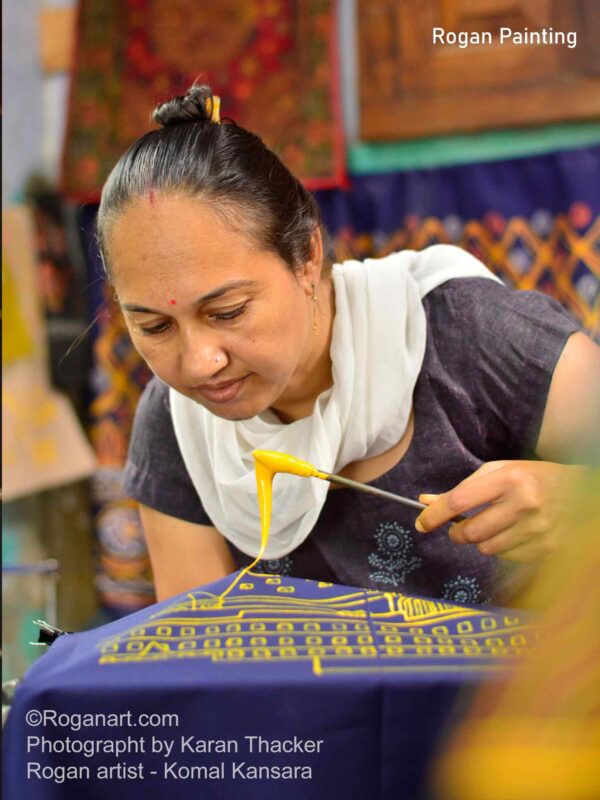
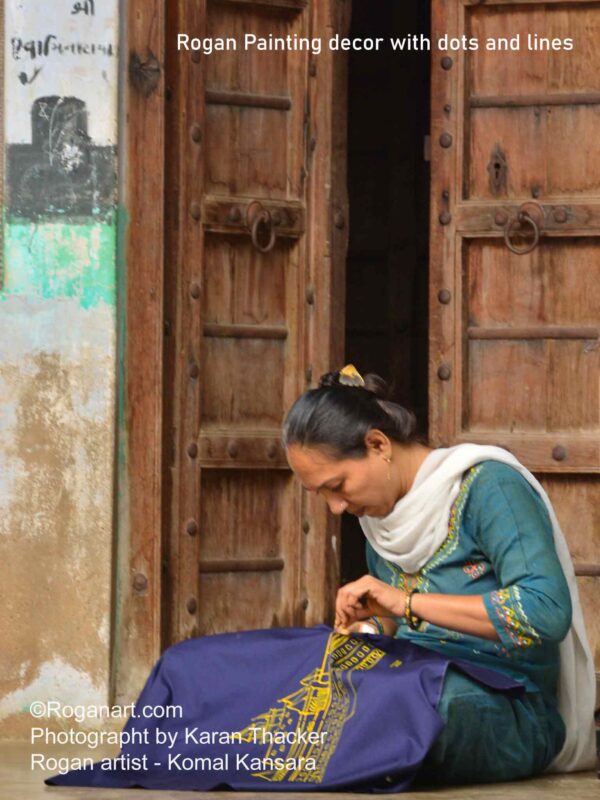
Pingback: Master Artisan of the Rogan Arts - Ashish Shantilal Kansara - Nirona Handicrafts
Pingback: Rogan Art is the unique art of oil painting | Nirona